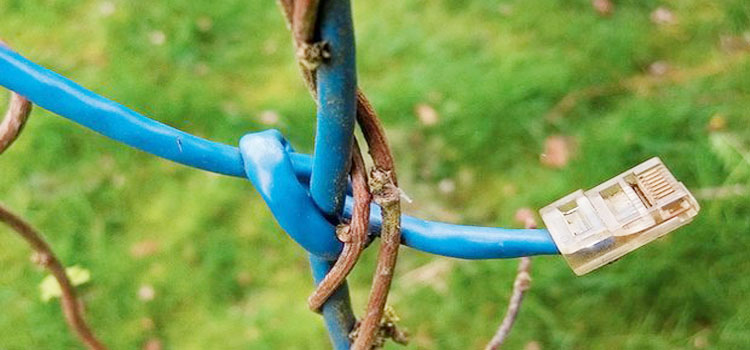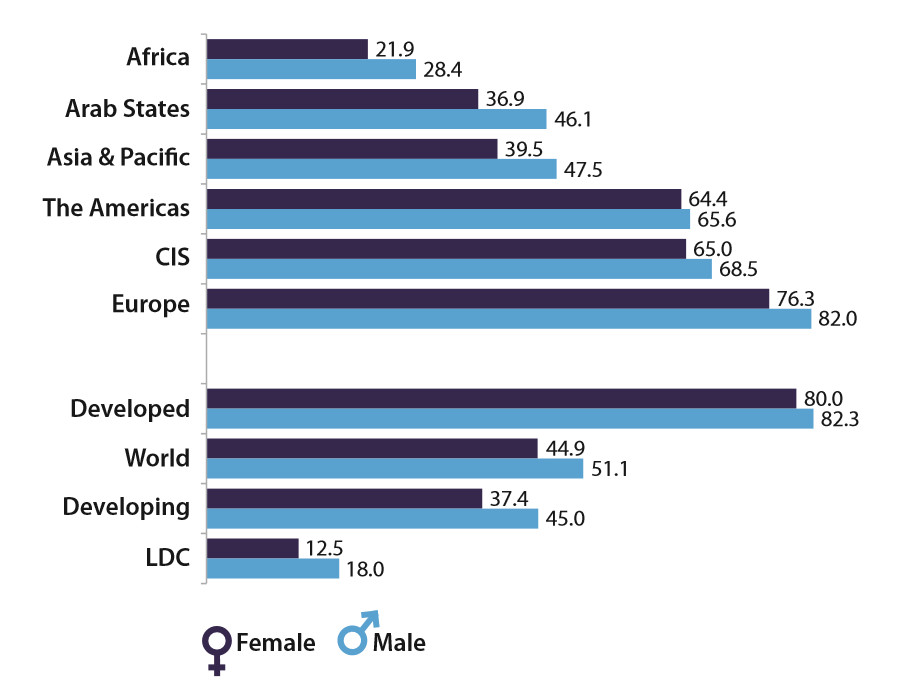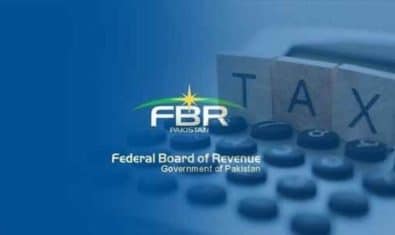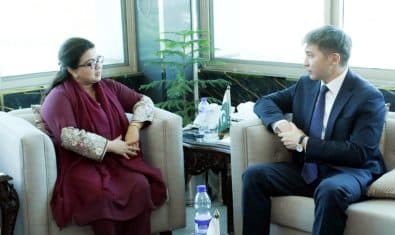Pakistan ranks among the countries with lowest internet penetration in the world, indicating that the recent internet uptake during past two years isn’t enough and a lot is still to be done.
Recent most ICT Facts and Figures (2016) released by International Telecommunication Union reveal that Pakistan — with some 18% internet users — is ranked alongside African countries for internet penetration.
Pakistan specific stats reveal that majority of internet users are connected with wireless broadband (3G and 4G) while fixed broadband (DSL, FTTH) still accounts for less than 3% of Pakistan’s population, as compared with 10-12 percent in fixed broadband globally.
World’s Offline Population
ITU emphasized that a 53% of global population, especially in developing worlds, remains cut-off from internet. ITU said that this is happening regardless of the fact that prices for ICT services are falling in almost every market.
More detailed global map of internet penetration in the world is given below:
Global Mobile Broadband Reach
Seven billion people (95% of the global population) live in an area that is covered by a mobile-cellular network (2G at least).
Mobile-broadband networks (3G or above) reach 84% of the global population but only 67% of the rural population.
Advanced mobile-broadband networks (LTE) have spread quickly over the last three years and reach almost four billion people today – corresponding to 53% of the global population.
But while the number of mobile-broadband subscriptions continues to grow at double digit rates in developing countries to reach a penetration rate of close to 41%, mobile-broadband penetration growth has slowed overall.
Globally, the total number of mobile-broadband subscriptions is expected to reach 3.6 billion by end 2016, compared with 3.2 billion at end 2015.
Fixed broadband growth
Global fixed-broadband subscriptions are expected to reach around 12 per 100 inhabitants in 2016, with Europe, the Americas and the Commonwealth of Independent States regions having the highest rates of penetration.
Strong growth in China is driving fixed-broadband in Asia and the Pacific, where penetration is expected to surpass 10% by end of 2016.
ICT prices continue to fall
Mobile-broadband services have now become more affordable than fixed-broadband services, with the average price for a basic fixed-broadband plan more than twice as high as the average price of a comparable mobile-broadband plan.
By the end of 2015, 83 developing countries — including Pakistan — had achieved the Broadband Commission’s affordability target.
Digital Divide
By the end of 2016, more than half of the world’s population – 3.9 billion people – will not yet be using the Internet.
While almost one billion households in the world now have Internet access (of which 230 million are in China, 60 million in India and 20 million in the world’s 48 Least Developed Countries), figures for household access reveal the extent of the digital divide, with 84% of households connected in Europe, compared with 15.4% in the African region.
Global online gender gap widens
Internet penetration rates are higher for men than for women in all regions of the world.
The global Internet user gender gap grew from 11% in 2013 to 12% in 2016. The regional gender gap is largest in Africa, at 23%, and smallest in the Americas, at 2%.
Internet bandwidth
By early 2016, international Internet bandwidth had reached 185,000 gigabits per second, up from a low of 30,000 gigabits in 2008.
However, bandwidth is unequally distributed globally, and lack of bandwidth remains a major bottleneck to improved Internet connectivity in many developing and Least Developed Countries.
Download ICT Facts and Figures 2016
You can go to this link to download ITU’s ICT Facts and Figures for 2016, that were released earlier today.




























This figure will never go beyond 35 to 40 percent in my opinion. All blue color persons and our mothers who use to be a housewife will never enjoy luxioury of internet due to various reasons.
Well , Even as an Internet entrepreneur it really hurts to see that you’re just serving 18% of total population. I mean if it becomes 90%+ our revenue would go 5 times higher which would automatically help GDP and Economy of the nation. Government needs to realise the importance of internet services and connectivity in modern world. Obviously with more people using Internet , it will become a big deal business with more advertisers , customers and more.
Though it is expected that upto 40% of Pakistan would be online by 2020 (Ahsan Iqbal quote) , numbers should have been higher.
The way our telcos & providers are being taxed, they may start to think about closing shops. This sector’s growth will be hindered by taxes & unavailability of alternate under-sea routes.
ProPakistani has really matured and carries timely and well researched and written articles. I use this source extensively now for my own use and refer and use these materials to tell others around the world as to what is happening in Pakistan in this sector.
ProPakistani has morphed from being a simple reporting site for telecoms to carrying useful information about associated data and news.
Salman Ansari
Too expensive in Pakistan.